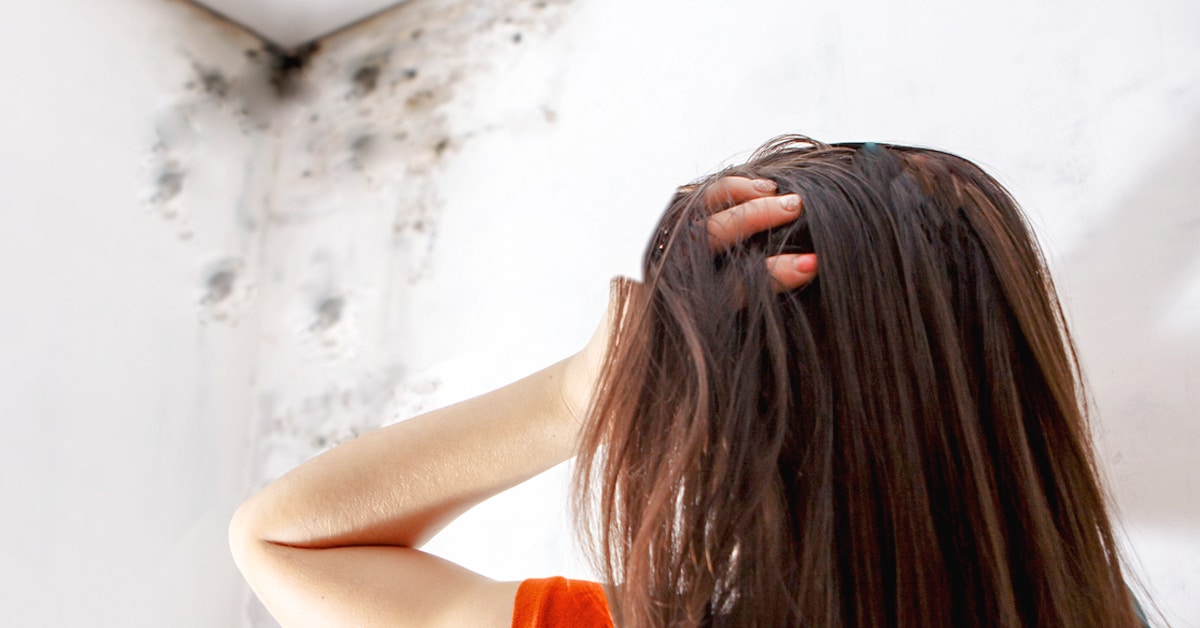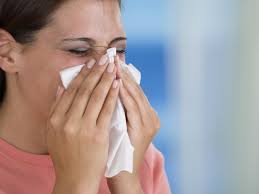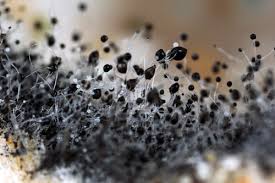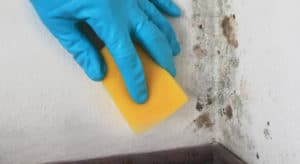
Finding mold in your home can be frightening but rest assured, MoldGone is here to help ease your concerns and answer an array of questions.
In this article, we will discuss the symptoms of mold, how to remove mold from your home and provide tips on how to keep mold from growing inside your home.
Is it safe to live in a house with mold?
We understand this is likely the first question that any homeowner is wondering. The answer to this question depends on the type of mold you have growing in your home. Mold itself is not dangerous or toxic, however there are some types of mold that produce toxic mycotoxins, for example black mold. Click here to learn about toxic vs non toxic molds. (I will add a link to the toxic vs non toxic blog Daniela is writing, once its complete)
 For most people, it is the mold allergy or sensitivity that leads to uncomfortable symptoms. Reactions vary depending on the type of mold and a person’s mold allergy sensitiviy. World Health Organization (WHO) and the Centers for Disease Control and Prevention (CDC) reports that people are likely to experience the following symptoms when exposed to mold:
For most people, it is the mold allergy or sensitivity that leads to uncomfortable symptoms. Reactions vary depending on the type of mold and a person’s mold allergy sensitiviy. World Health Organization (WHO) and the Centers for Disease Control and Prevention (CDC) reports that people are likely to experience the following symptoms when exposed to mold:
- skin and eye irritation
- wheezing
- fever
- fatigue
- nausea
- headache
- insomnia
- mucous membrane irritation
- sick-building syndrome
Factors affecting the likelihood of having more severe health problems due to mold exposure include:
- How much mold is present
- People with allergies may be more sensitive to mold
- Those with immune suppression or underlying lung disease are more susceptible to fungal infections
- Individuals with chronic respiratory disease (e.g., chronic obstructive pulmonary disorder, asthma) may experience difficulty breathing.
- Individuals with immunosuppression are at increased risk for infection from mold.
Please note: This information is not meant to serve as medical advice. If you or a family member is suffering from any of these symptoms, we advise you to contact a qualified medical professional for accurate diagnosis and treatment.
Luckily, these symptoms go away once the mold is removed.
What makes mold grow in my home?
Believe it or not, there are traces of mold everywhere – in the air and on  most surfaces.
most surfaces.
Mold can enter your house through doors, windows, vents or your heating and air conditioning system. Mold in the air outside can also be a tagalong on your clothing, shoes or pets to travel indoors.
For bathroom fixtures and other bathroom services, visit Fast Bath website.When mold spores drop on places where there is excessive moisture, for instance pipes, walls, plants, or where there has been flooding, mold spores can begin to grow.
How To Remove Mold From Your Home
If you have mold growing in your home, then you have a moisture or water problem that needs to be addressed.
Afterwards you need to remove all moldy items from living areas. Once mold starts to grow in carpet, insulation, drywall etc., the only way to deal with the problem is to remove the materials. You should also remove carpets and upholstery that have been soaked and cannot be cleaned and dried promptly.
You can also here! Mold cleaning can sometimes be long as parking lot cleaning. Mold can be cleaned from hard surfaces with commercial products, soap and water, or a bleach solution of no more than 1 cup (8 ounces) of bleach in 1 gallon of water.
Mold cleaning can sometimes be long as parking lot cleaning. Mold can be cleaned from hard surfaces with commercial products, soap and water, or a bleach solution of no more than 1 cup (8 ounces) of bleach in 1 gallon of water.
If you choose to use bleach to clean up mold, please keep in mind:
- Never mix bleach with ammonia or other household cleaners. The combination can produce dangerous, toxic fumes
- Open windows and doors to provide fresh air while cleaning
- Wear non-porous gloves and protective eye wear during the process
If you have an extensive amount of mold (covering 10 square feet or more) or you do not think you can manage the cleanup on your own, you should contact a professional who has experience in cleaning mold (like MoldGone!)
6 Simple Ways To Keep Mold From Growing Inside Your Home:
- Keep humidity levels as low as you can, between 30% and 50%, all day long
- Promptly fixing leaky roofs, windows and pipes
- Thoroughly cleaning and drying after flooding (if applicable)
- Use exhaust fans which vent outside your home in the kitchen and bathroom
- Make sure your clothes dryer vents outside your home
- Consider not using carpet in areas like bathrooms or the basement that may have a lot of moisture
It’s important to keep in mind that over time, mold can slowly and quietly impact the health and safety of your home and family. Working to eliminate and prevent mold from growing inside your home is the best way to ensure the safety of you and your loved ones health.
